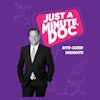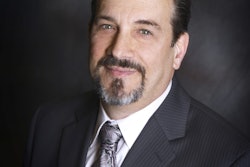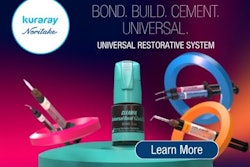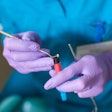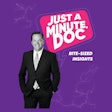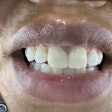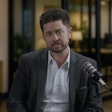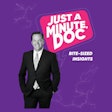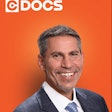Dr. John Flucke was one of the first key opinion leaders I met when I entered the dental industry more than 20 years ago. He quickly became one of my go-to guys when it came to understanding the latest advances in dental technology.
There's a reason why he's widely known as dentistry's "technology evangelist." For decades, he was the chief dental editor and technology editor for Dental Products Report. He's also a practicing dentist in Lee's Summit, MO, and an avid gadget guy with an uncanny eye for tech that will or won't stick, because he's tested it all.
For this edition of Dental Duets, I asked Flucke to reflect on 25 years of innovation in dental technology. From the hits that changed how dental clinicians work to the misses that they'd rather forget, he gives us the inside scoop, plus a look at what's coming next.
Ventriello: You've tested dental tech for over two decades. What was the first piece of technology that made you say, 'This is going to change everything.'
 Dr. John Flucke.
Dr. John Flucke.
Flucke: It was an intraoral camera. Back then, they were expensive. My first one was $15,000. My dad (who wasn't a dentist) happened to be at the demo. After the sales guy left, Dad was really excited and asked when I was going to buy it. I told him I couldn't afford it. He began to explain to me that patients needed to see their problems to understand them. He said the camera would pay for itself in no time. He was right. When a patient can see and understand their problem, they want to have it corrected. After that, it was off to the tech races for me.
Q: On the flip side, what's a technology you thought would take off but didn't?
A: I loved air abrasion back in the late '90s. I had a unit and loved it. The devices were really popular for about five years and then faded. People still have them and those that do love them. However, they never got the market traction I thought they deserved.
Q: Let's talk about CAD/CAM and same-day crowns. That's a polarizing technology. Dentists either embrace it or avoid it. Where do you land?
A: I'm actually on both sides. I started with it very early on and gave up on it. It worked in my hands, but I got tired of needing to upgrade my device about every three years. Now that the market has matured, I'm back using it. In 2022, we installed a DGShape DWX-42W mill, and it has been amazing! We get results that look like they came from a lab. Most dentists that are sending cases out don't realize that most of the restorations they get back are milled. It's so much easier and profitable to do them in-house. The fact that I didn't need to buy a closed 'one company system' was also a factor. I can pair any intraoral scanner with the DWX-42W mill. That mill was also considerably less money than a closed all-in-one system.
Q: Of the tech you've brought into your practice, what's delivered the best return on investment and why?
A: Dang, that's a tough question. My parameters for incorporating new tech are:
- It gives me a better or similar clinical result.
- It saves time.
- It's easier on both the team and the doctor.
Off the top of my head, I'd say intraoral scanning is the key one. No impression material, amazing accuracy, and patients love it. I basically prep and walk away. That means the team is scanning and designing the crown if we do it in-house. The team loves it because they get to work with the super cool technology and do more. Plus, the cementation time is much less. It's a massive game changer.
Q: You've been writing and lecturing about artificial intelligence (AI) in dentistry for several years. Are we on the verge of something big, or are we caught in a hype cycle?
A: We're on the cusp. We're about to see AI turned loose on cone-beam computed tomography (CBCT). It's going to provide info we didn't even know was possible. We're going to be able to merge intraoral scans directly into the CBCT volume and do virtual articulation. AI is going to change clear aligner orthodontics as well.
AI can design crowns and appliances, AI can help fill holes in the schedule, it can also find every picture of my cat that I've taken on my phone. In a couple of years, we'll look back and say, 'Remember when we only …' The change will be that dramatic.
Q: What about the recent surge in robotics and automation in dentistry? Is this the next frontier or another expensive toy?
A: The cost barrier needs to come down considerably before it sees mass adoption. The tech also needs to get smaller and easier to use. However, with that said, I think we'll see more of it. This is another place where AI is going to really change things. I fly drones as a hobby, and they are amazing at orienting themselves in all three dimensions. That kind of tech is going to make robotic implants much easier.
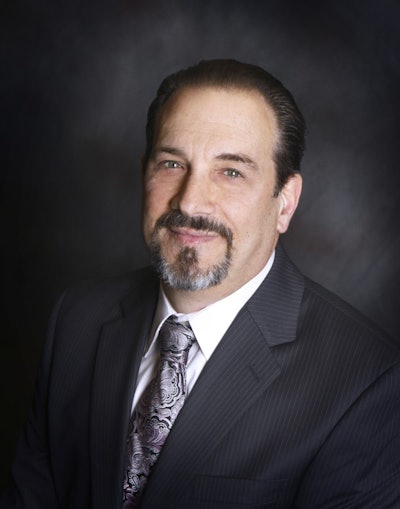 Michael Ventriello.
Michael Ventriello.
Q: What's the biggest barrier to adoption when it comes to new technology in dental practices?
A: I think there are a couple of factors at play. No. 1 is getting comfortable with it. Clinically, we are 'on stage.'
Patients don't want to see someone struggling to do something. I'm a huge proponent of bench-testing new tech. I work with it on typodonts or something for hours before I go to the mouth. When I do, it's much easier since I've got a comfort level. However, even with that, there will be snags. I'm not too proud to tell patients, 'This is something new, and it may take me longer to do this today, but the results will be worth it.'
A doctor always needs to remember that doing something for the first time isn't easy. Most children take their first step and fall. That doesn't mean they stop walking. It means they keep learning and learn to walk better.
The other thing is buy-in from the staff. Whenever we make a major tech integration, I have a staff meeting. We discuss it and overcome the objections. We problem-solve the integration before it comes into the office. A lot of the tech dentists use impacts the team more than the doctor. You need to get the staff fully engaged and excited about it. That turns the corner on adoption.
Q: What's a piece of tech you wish every dental practice would adopt today?
A: All of it. Just kidding. There are three things I wish everyone would use or use more. The first two are digital radiography and intraoral cameras. Not only are they mature tech that's easy to use, they are amazing tools for communicating with patients.
I also wish everyone used electric handpieces. I can tell you from personal experience that they make treatment so much easier and more efficient. Many doctors think they are luxury items … until they use one. Better results in significantly less time is exactly what tech is supposed to do. Electric handpieces deliver that in ways that doctors don't understand … until they pick one up.
Q: In your opinion, which dental technologies will bridge the gap the most between dentistry and medicine and have the greatest impact on overall health?
A: I think salivary testing and maybe DNA screening. Many patients have excellent home care but still have recurring problems. Those tools will give us a much better understanding of why that happens. Patients are starting to understand that the mouth is connected to the rest of the body, and those tools will help bridge that gap.
Q: Looking ahead, what's a future dentech winner you think we'll be discussing in 25 years?
A: 3D printing. The results are incredible. Up to this point in time, the bottleneck in adoption has been designing the projects. AI has changed that. There are design platforms that allow the creation of precise things by just clicking Next on the screen.
Speed, efficiency, and clinical results. I truly think that the current concept of the lab area in a dental office that is covered in dust and pieces of dental stone is soon going to be like the office darkroom of 20 years ago. The office lab of the future will be where the printing systems will be.
Q: If you could go back 25 years and give yourself one piece of advice about dental technology adoption, what would it be?
A: Be open-minded and do your homework! One of the gifts I got when God put me together was an engineering mind. My biggest buzz is the why of doing things. Knowing why we do things has really helped me to discover the how. If you know why you're performing a task, it helps you see ways to improve it.
Dentists tend to see new things and ask, 'How long has this been around?' We like a track record of proof. Tech doesn't work like that. It evolves and matures much faster than analog. Because of that, if you wait five years, you're adopting legacy tech that is generations behind.
I've never looked at tech as an expense. I see it as an investment. I'll close this with a story from my office. I once had a patient tell me, 'I want you to know that I pay more to come to this office, but when I look around here, I can tell where that extra money goes. This place is always state of the art.' That's one of the best compliments I've ever received.
Dr. John Flucke is the former chief dental editor and technology editor for Dental Products Report and maintains a private practice in Lee's Summit, Mo. He is a nationally recognized lecturer, writer, and technology consultant. He can be reached at [email protected]. Connect with him on LinkedIn.
Michael Ventriello is widely regarded as the "Dental Product Launch Expert" and is the owner and founder of Ventriello Communications and the co-founder and chief communications officer of Personify Group. Ventriello is an award-winning copywriter, former journalist, broadcaster, and frequently published author and dental industry pundit. Connect with him on LinkedIn.
The comments and observations expressed herein do not necessarily reflect the opinions of DrBicuspid.com, nor should they be construed as an endorsement or admonishment of any particular idea, vendor, or organization.



